SME Finance Policy Guide
SME Finance Policy Guide
SME Finance Policy Guide
Create successful ePaper yourself
Turn your PDF publications into a flip-book with our unique Google optimized e-Paper software.
G-20 <strong>SME</strong> FINANCE POLICY GUIDE<br />
57<br />
Box: Examples of Credit Guarantee Schemes<br />
Example of an Upper-Middle-Income Country: FOGAPE (Chile)<br />
FOGAPE is a partial credit guarantee scheme operated by Banco Estado, a large state-owned bank in Chile (see<br />
previous section). It provides partial guarantees on <strong>SME</strong> loans extended by commercial banks and counter-guarantees<br />
to mutual guarantee associations. FOGAPE targets <strong>SME</strong>s who lack collateral or need longer maturities. FOGAPE<br />
functions in many aspects as a traditional guarantee scheme by sharing the risk of default on eligible loans and<br />
charging a guarantee premium. However, FOGAPE is also unique by having pioneered a new approach for allocating<br />
guarantees among participating banks. Every year FOGAPE conducts four to six auctions where each bank submits<br />
a bid indicating the amount of guarantee it wants to receive and the minimum coverage ratio it is willing to accept.<br />
Coverage ratios fluctuated around 70 percent before the financial crisis, increased to about 80 percent during 2009<br />
and 2010, but recently declined to pre-crisis levels. Banks pay a premium that depends on their historical default and<br />
claims performance and that typically varies between 1 and 2 percent of the outstanding balance. Banks with high<br />
default rates can be excluded from the scheme. FOGAPE has been financially sustainable, due to the auctioning of<br />
coverage ratios, the risk-related fees, and a very reasonable average net loss ratio of 1.5 percent of guarantees. A<br />
number of empirical studies have concluded that the scheme provides additionality and has a positive developmental<br />
impact. During the financial crisis, the Chilean Government increased FOGAPE’s capital by a significant amount<br />
to enable the scheme to play a substantive countercyclical role. In 2010 FOGAPE’s volume of guarantees to M<strong>SME</strong>s<br />
reached USD 1.8 billion for a total financing of around 2.7 USD billion.<br />
Example of a Lower-Middle-Income Country: The European-Palestinian Credit Guarantee Fund (West Bank/Gaza)<br />
The European-Palestinian Credit Guarantee Fund (EPCGF) was created in 2005 and funded by the German<br />
Government, the European Commission, and the European Investment Bank. It was designed to jumpstart <strong>SME</strong> lending<br />
in a very challenging environment that had resulted in very limited bank lending and practically no lending to<br />
<strong>SME</strong>s. It targets <strong>SME</strong>s with less than 20 employees but avoids start-ups due to the perception of excessive risks in<br />
this segment. The scheme provides a coverage ratio of 60 percent, a maximum loan amount of USD 100,000, and a<br />
1 percent up-front fee complemented by a 1.5 percent annual commission on the outstanding guarantee. It provides<br />
guarantees on loans with maturities from 1 to 5 years and does not impose interest rate caps. It has streamlined procedures<br />
for approval of guarantees and payment of claims that enhanced its credibility among banks. The guarantees<br />
are not disclosed to the borrowers in order to enhance discipline.<br />
Example of a Low-Income Country: The <strong>SME</strong> Credit Guarantee Facility for Afghanistan (Afghanistan)<br />
The <strong>SME</strong> Credit Guarantee Facility for Afghanistan was created in 2005 and funded by the United States Agency for<br />
International Development (USAID) and the German Government. Like its Palestinian counterpart, it was created to<br />
jumpstart <strong>SME</strong> lending in a challenging environment and shares some of characteristics. It provides a coverage ratio<br />
of 72 percent, charges risk-related fees, does not impose interest rate caps, and does not disclose the guarantees to<br />
the borrowers to enhance discipline. Also like the Palestinian scheme, it introduced from the start a substantive<br />
capacity-building program, including assistance to the establishment of dedicated <strong>SME</strong> units in the banks. It succeeded<br />
in boosting <strong>SME</strong> lending from negligible levels and has an NPL ratio of only 1.3 percent of the outstanding<br />
stock of guarantees. The program has provided financing for USD 37 million, reaching more than 1,200 <strong>SME</strong>s.



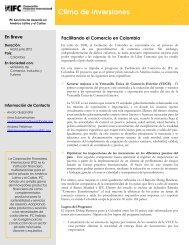
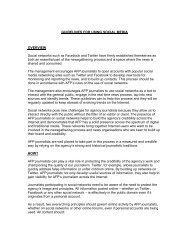
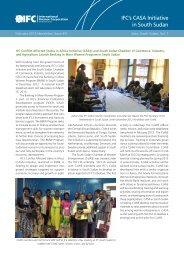

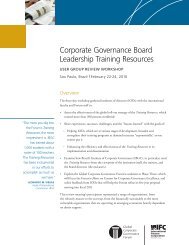


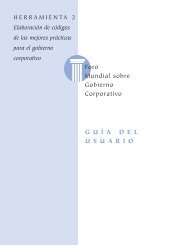

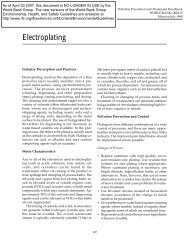
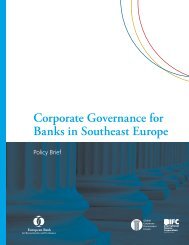
![Print a two-page fact sheet on this project [PDF] - IFC](https://img.yumpu.com/43449799/1/190x245/print-a-two-page-fact-sheet-on-this-project-pdf-ifc.jpg?quality=85)


